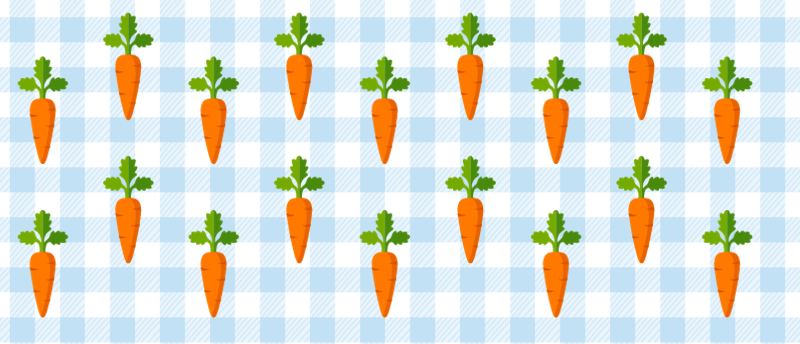Getting to the root of carrots’ color

Researchers have uncovered the three genes responsible for the orange color of carrots in a study of 600 carrot genomes.
A recent study of the genomes of over 600 carrots has identified that three genes are responsible for their orange color [1]. Researchers at North Carolina State University (NC, USA) in collaboration with the University of Wisconsin-Madison (WI, USA) made the surprising discovery that for these genes to give orange carrots their color, they need to be switched off. Their findings reveal the traits important to the improvement of carrots and their health benefits.
Carotenoids, the pigments that give carrots their color, are precursors of vitamin A and play a significant role in protecting against eye diseases and UV-directed skin damage. Orange carrots provide the most abundant source of precursor vitamin A of any vegetable in the diet of the USA. Throughout their history, carrots have been selectively bred to enhance their vivid color and sweet flavoring, changes that have also led to an increase in the nutritional value of the crop.
To better understand the genetic history of the orange carrot and its nutritional value, the researchers built upon their earlier work, which generated an initial carrot reference genome [2], to produce an improved reference genome using a combination of Pac Bio and Oxford Nanopore long-read sequencing techniques. This was coupled with the resequencing of 630 different types, or ‘accessions’, of carrot genomes using a NovaSeq6000 sequencer from Illumina.
 Dinosaur feathers have similar protein composition to bird feathers
Dinosaur feathers have similar protein composition to bird feathers
In a study on dinosaur feathers, researchers find that fossilization can alter trace protein composition and structure.
Using a structural analysis approach known as selective sweep analysis, the researchers investigated the genetic history of the carrots and the traits that had been selected for during their domestication. This approach was used to analyze five different groups of carrot genomes to identify areas that are heavily selected in certain groups.
Interestingly, they found that many of the genes involved in flowering were under selection, particularly those involved in delaying the flowering process. This reflects the selection for genes that produce a nutrient-rich, edible root by breeders, as flowering causes the edible taproot to harden and become inedible.
The team also identified three genes that are essential to the regulation of the orange carotenoids, α- and β-carotene. They found that the accumulation of α- and β-carotene in orange carrots is determined by the presence of the recessive alleles of these genes.
“Normally, to make some function, you need genes to be turned on,” said Massimo Iorizzo, co-corresponding author of the study. “In the case of the orange carrot, the[se] genes… need to be turned off.”
The identification of the three pigmentation genes in this study creates an opportunity for the improvement of carrots through selective breeding strategies. This provides the potential to breed carrots with higher nutritional value, more diverse colorings for their use as natural colorants and that can sustain growth in increasingly difficult environmental conditions. Each of these potential attributes could be hugely valuable to human health and agricultural practices.
While the focus of this study was carrots, the findings may also be applicable to the improvement of other crops: Iorrizzo highlights that “[c]arotenoids got their name because they were first isolated from carrots,” but have since been identified in broccoli, spinach and tomatoes, to name a few.